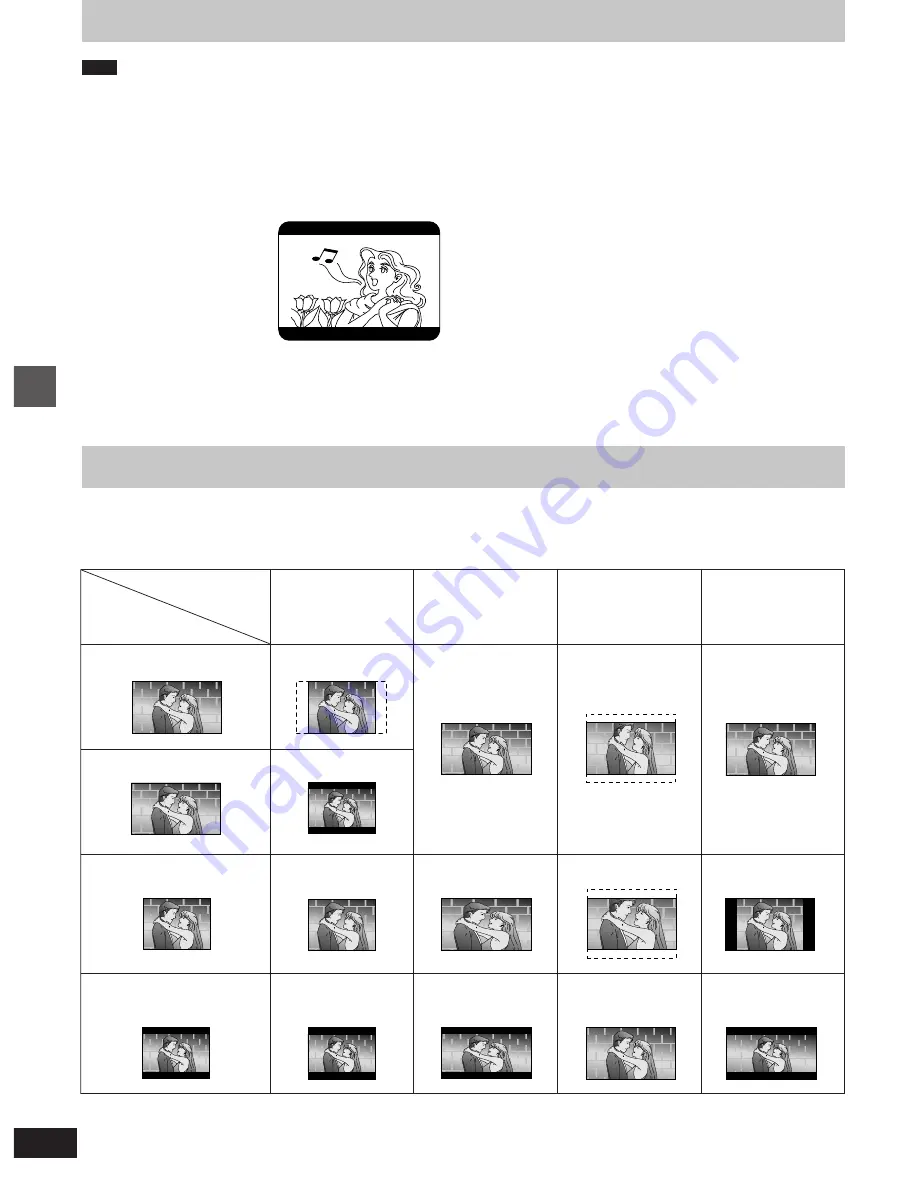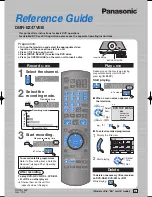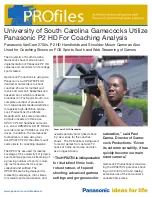
32
VQT8626
Advanced Operations
For your reference
≥
I/P/B
To efficiently store video on DVD, common elements among frames
are used in common, and different elements are recorded with each
individual frame. The frame that contains the common elements is
called an I-picture, a complete frame in itself. A P-picture is
calculated from past I or P-pictures. The frame that fills in the
spaces between the I-and P-pictures is called the B-picture.
I-pictures have the best picture quality, so they should be used
when making picture adjustments.
≥
Frame
Individual images in a video or on the television are called frames.
≥
Field
Half of the video information (video signal) in a frame is called a
field. With conventional TV systems, a single frame (a single
screen) consists of two fields.
≥
Frame still
The two fields are displayed alternately on the TV screen, so the
image may be blurry. However, the image quality is better than field
images.
≥
Field still
Only one field (half of the video information) is displayed on the TV
screen, so the apparent resolution is low. However, there is no
blurring on the screen.
The names given to the television picture modes depends on the make of your television. There may also be slight differences in how the pictures
appear on the screen. Refer to your television’s operating instructions for details.
Wide-screen, pan and scan
Wide-screen, non-pan and
scan
Regular (4:3)
Regular (4:3) letterbox
16:9
zoom mode
Top and bottom cut off
Top and bottom cut off
Full screen
16:9
full mode
Full screen
Screen stretched
horizontally
Letterbox with screen
stretched horizontally
4:3
Edges cut off
Letterbox
Full screen
Letterbox
16:9
auto mode
Full screen
Full screen with black
bands at right and left
Letterbox with
extremities of picture
stretched
Television and
picture mode
Software format
How different kinds of software appear on your television
DVD software is recorded in a variety of picture formats, and how they appear on your TV depends on the software, the kind of TV you have, and the
picture mode your TV is set to.
≥
Letterbox refers to pictures where black bands appear at the top and bottom.
≥
Pan and scan refers to pictures where part of the picture is cut off so it fills the whole screen.
Note
≥
Audio is heard at any speed when playing CDs, regardless of any
settings at “2 Audio during Search”.
≥
Audio is not heard at any speed when playing CDs encoded with
DTS, regardless of any settings at “2 Audio during Search”.
≥
It is recommended that “1 PAL60” is selected in “7 NTSC Disc
Output” when a PAL TV is connected; however, the images shown
below will appear on the TV screen.
The picture may be compressed vertically.
Changing initial settings













































